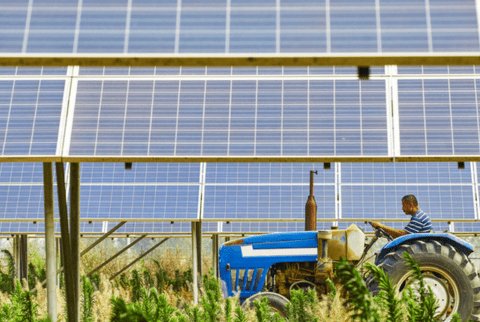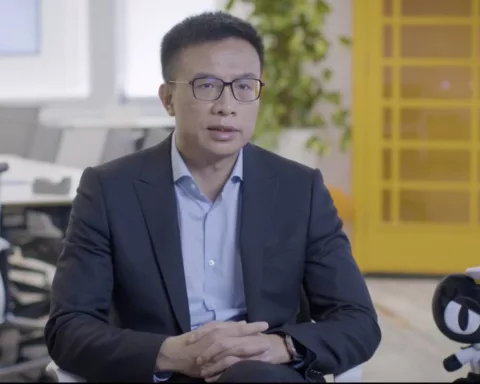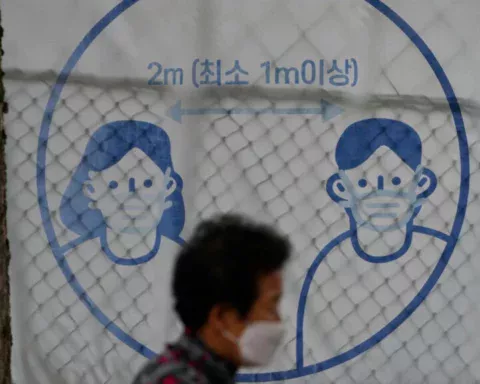Rehana also had a permanent disability caused by an accident that impaired her mobility. But once Rehana reached Dhaka, a whole new world opened up. She found new friends, a steady income, and a new sense of self. She began saving for her wedding and sending money back home to her family in the village. She even dreamt of one day owning a small business.
Then COVID-19 hit and the garment industry in Bangladesh reeled from the shock. Orders stopped coming in. Inventory piled up. Rehana and several other young women were laid off. She headed back to her village, not knowing what the future would hold.
Rehana’s story is not an isolated one, as the world struggles to make sense of the pandemic. The term “inclusive recovery” has become commonplace in the emergency response to the pandemic.
In reimagining the post-COVID-19 future, policy makers, international agencies, and other non-state actors are all concerned with getting it right. Much has been said about the poor bearing the brunt of the pandemic.
The World Bank’s latest projections show that the crisis will see between 73 and 117 million people slip into extreme poverty. Poor households are less likely to have access to health services, water and sanitation. They are more likely to work in jobs without social protection, which do not allow for tele-working arrangements and are at a greater risk of layoffs. They also do not have adequate access to digital information and technology, thus impeding online learning opportunities.
But an inclusive recovery goes beyond protecting the poor or those at risk of falling into poverty, although it is essential. Inclusive recovery is about addressing the exclusion and long-standing systemic inequalities that COVID-19 has laid bare. Regardless of their wealth, older adults and persons with certain disabilities, for instance, are at greater risk of contracting the virus.
Women and children are disproportionately affected by increasing domestic violence and limited access to reproductive health, in both poor and non-poor households. In the United States , COVID-19-related hospitalization and death rates are highest among American Indian or Alaska Natives, African Americans , and Hispanics. Many lesbian, gay, bisexual, transgender, and intersex (LGBTI) people have historically faced stigma and barriers to accessing health services, and COVID has made it more difficult for them to access essential services.
In a recent report, the World Bank has shown that exclusion is costly to both societies and economies. At the individual level, such costs include poorer educational outcomes and mental and physical health, lost wages and lifetime earnings, to name a few.
At the national level, the economic cost of exclusion can be captured by forgone GDP and human capital wealth. Globally, the loss in human capital wealth due to gender inequality alone is estimated at $160.2 trillion. The International Monetary Fund (IMF) has shown that inequality is detrimental to medium and long-term growth. Finally, accumulated grievances among those who have been left out can lead to social tensions and conflict, with significant long-term social and economic costs. Therefore, the contours of an inclusive recovery need careful thought and attention. Here are six things to consider.
Image
- We need to begin by understanding long-standing systemic inequalities and to know who is being excluded, how and why: Many shortcomings in societies and economies around the world were visible before the pandemic. Existing inequalities have since been exacerbated: in some European countries, Roma communities have been scapegoated and stigmatized as spreaders of infection.
In the U.S., a Pew Research Center study showed that about 40 percent of African-American and Asian adults say people have acted as if they were “uncomfortable around them” because of their race or ethnicity since the beginning of the outbreak of the pandemic. There are also reports of increased xenophobia in the face of the pandemic. The stigmatization of people affected by COVID-19 has also emerged across Sub-Saharan Africa, discouraging people from seeking healthcare and leading to the ostracization of survivors. Inclusive recovery will need to proactively consider these structural inequalities and the processes by which historically excluded groups are being further marginalized.
Let us go back to Rehana. Who is she? What does her family do? How much do they earn? How does Rehana’s disability affect the extent to which she can access the services the government makes available? We have shown elsewhere that the first step towards inclusion is to ask the right questions and this applies to inclusive recovery as well. We need to answer questions like: who is likely to be most affected? Where do they live?
What are their occupations and living conditions? How are they more likely to be affected? Why are they more likely to be affected, and what do they need and want to cope? These questions may seem simple, but in fact they are the key to determining effective targeting, appropriate intervention, and whether actions have indeed been inclusive.
For example, Rwanda has invested in technology to gather data and information as well as its own system of identifying vulnerable groups through community action called Ubudehe. This enables local authorities to know who is likely to be excluded from testing and tracing and how.
2. We need to be mindful of new forms of exclusion that pose threats to progress: In understanding who is affected and how, we need to stay abreast of the effects of the pandemic on currently excluded groups, while we also understand the risk of new forms of exclusion. For example, Rehana had become a face of social mobility through the garment sector for which Bangladesh has become famous.
Though she may have transcended many of her functional limitations, once Rehana returns to her village, she will not only go back to likely poverty, but also to the stigma faced by a person with a disability. The World Bank recently drew attention to the “new poor” profiling them as being “more likely to live in urban areas, live in dwellings with better access to infrastructure, own slightly more basic assets than those who are poor in both 2019 and 2020.” They also include those who are more educated than the chronic poor. Finally, as we watch the progress of the COVID-19 vaccine, we worry that it could be rationed. If so, governments will need to ensure that the supply of vaccines is not captured by elites.
3. We need robust investments in data and analysis: Rehana is emblematic of marginalized communities who often remain invisible but face similar life struggles. We do not know where they live, nor how they are affected by the pandemic. Good data, therefore, is critical to close the inclusion gap.
Data that is disaggregated by age, sex, residence, occupation, race, ethnicity, disability status, and household characteristics is indispensable to understanding the nuances of the issue. We have started on some of these ventures by supporting high frequency data collection via phone in over one hundred countries.
Rapid assessments undertaken by local governments and NGOs are also indispensable sources of information during and after the pandemic, such as WIEGO’s assessment of how COVID-19 and related health measures impact informal workers in Africa, Asia, and Latin America. This data and the analyses need to be publicly accessible, while respecting individual privacy. Many countries are already taking the lead towards this, with South Korea being one example.
4. We need to ensure that people have the tools to drive their own solutions. For inclusive recovery, it is imperative to listen to people about their needs and make them an essential part of the design and monitoring of interventions.
New Zealand has shown that public trust, state-society compact, and transparency can help people change behaviors and take control of their situation. Community-driven development (CDD) programs, for example, can effectively deliver cash, or in-kind transfers, and basic services directly to the most vulnerable communities and groups.
They have successfully been used to provide support to excluded groups. In Indonesia, CDD programs are helping equip villages on the frontlines of COVID-19 with information and monitoring systems to allow for large-scale data collection and tracking of health, job loss, poverty, and social assistance, on a regular basis. The participation of communities in the design and often in the monitoring of programs will be an essential part of the recovery process.
5. We need to help states and service providers to be accountable to households and communities: It is more important today than ever before to ensure not just that state and non-state providers “listen” to the most marginalized peoples at the design stage, but also that they report back to them through the implementation stage.
Unless, such accountability is strengthened through regular citizen feedback, we will never really know if a measure is inclusive or not. There are a host of mechanisms through which governments can receive citizen feedback. These range from simple questions via text messaging on mobile phones to more complex web-based portals. Strengthening grievance redress systems has also become more important today than it was before, as face-to-face contact with persons in authority has reduced and physical mobility has been restricted.
6. We need to support the design of stimulus programs that explicitly target excluded populations. As post-COVID-19 recovery plans are being rolled out across countries, many seem to miss explicit opportunities for excluded populations. It will be vital to use post-pandemic recovery programs to support job programs for excluded groups and support the creation or growth of small and medium-sized enterprises (SMEs) led by members of excluded populations. Employing slum residents in service expansion programs to informal settlements or promoting women-led SMEs in food crisis management programs are examples of targeted stimulus programs for those who need it most.
We also know that women, for instance, face multiple constraints to benefitting from traditional public works programs. Ensuring that worksites are safely and easily accessible, providing safe transport, allowing for flexible working hours, or providing adequate childcare are steps that governments can take to facilitate women’s participation in employment generation programs.
For ethnic and religious groups, displaced people, refugees, or sexual minorities who face social discrimination, targeted outreach may be needed to ensure that they benefit from such programs. In a recent guide to working with social enterprises we highlighted ways in which inclusive recovery can support small entrepreneurs, as well as provide direct support to communities through innovative financing tools.
Overall, COVID-19 may well be an opportunity to build a more inclusive society and economy. To achieve this, however, we must prioritize Rehana and other vulnerable people like her whose lives have been upended by the pandemic. They will be the ultimate arbiters of whether the global recovery will have been truly inclusive.





